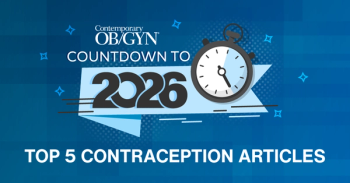
Active management of prolonged pregnancies reduces perinatal risks
A study found that offering personalized management at 41 weeks of pregnancy significantly reduces adverse perinatal and neonatal outcomes.
Perinatal and neonatal deaths are less likely following more active pregnancy management after 41 weeks of gestation, according to a recent study published in PLOS Medicine.1
Severe adverse outcomes of pregnancy such as perinatal mortality, stillbirth, and severe neonatal and maternal morbidity are more common in prolonged pregnancies compared to full-term pregnancies. While induction of labor may be used to reduce these outcomes, it has been linked to other adverse outcomes such as uterine rupture and the need for interventions during labor.2
In 2021 national Swedish guidelines, it was recommended to offer women at 41 weeks’ gestation either induction or an individual management plan.1 According to investigators, “it is important to investigate the effects of this new management on a national level.”
The study was conducted to assess maternal and neonatal outcomes following late-term pregnancy management. Pregnancy and neonatal outcome data was obtained from the Swedish Pregnancy Register (SPR), which includes over 95% of Swedish pregnancies. Mortality data was obtained from Statistics Sweden.
Electronic prenatal, delivery, and birth records are included in the SPR. Sociodemographic information is obtained from interviews conducted by a midwife at the first antenatal visit. Pregnancy and neonatal outcomes are reported at each delivery hospital.
Childbirth experience was self-reported on a 10-point scale, with scores of 1 to 4 indicating a negative experience, 5 to 6 mixed, and 7 to 10 positive. Self-rated health was determined with a 1-item question, with responses including very good, good, neither good nor bad, bad, and very bad.
Participants included women with pregnancies lasing at least 39 weeks’ gestation based on ultrasound dating or the date of embryo transfer registered in the SPR from January 1, 2017, to October 1, 2023. The study group included pregnancies lasting at least 41 weeks’ gestation, which were compared to those lasting 39 to 40 weeks.
Outcomes from January 1, 2017, to December 31, 2019, were compared with those from January 1, 2020, to October 1, 2023, to determine the impact of the active management strategy for pregnancies in Sweden.
Primary outcomes included perinatal and neonatal death, composite adverse perinatal and neonatal outcomes, 5-minute Apgar score under 4, hypoxic ischemic encephalopathy grades 1 to 3, meconium aspiration syndrome, birth trauma, and neonatal unit admission for at least 4 days. Secondary measures were based on these outcomes with additions.
There were 543,744 pregnancies lasting at least 39 weeks’ gestation reported during the study period. Of these, the rate of deliveries at 41 weeks’ gestation or later decreased by 3%, from 31% between 2017 and 2019 to 28% between 2020 and 2023.
In pregnancies lasting at least 41 weeks’ gestation, the rate of induction increased from 33.7% to 52.4%. Pregnancies lasting 42 weeks’ gestation became less common in the second period compared to the first, from 24% to 7.7%.
The risks of perinatal and neonatal death were significantly reduced from 2020 to 2023 compared to 2017 to 2019, with an adjusted relative risk (aRR) of 0.52. Similar declines were reported for stillbirth, perinatal death, and birth trauma, with aRRs of 0.46, 0.54, and 0.80, respectively.
Adverse composite outcome odds were also significantly reduced during period 2 vs period 1, with an aRR of 0.92 when including neonatal care and 0.79 when not including neonatal care. For maternal outcomes, a slight increase in cesarean section risk was reported, with an aRR of 1.07.
An increase in postpartum hemorrhage odds was also reported, but this change was minor in absolute measures. Among women with vaginal delivery, the aRR for obstetric anal sphincter rupture was 0.90, indicating a significant decrease in risk. Only 6.5% of women in the second period reported a negative childbirth experience, vs 7.5% in the first period.
These results indicated a decrease in perinatal and neonatal deaths from active management of pregnancies lasting at least 41 weeks’ gestation. Investigators concluded “Women with pregnancies advancing towards 41 gestational weeks should be given balanced information on the benefits and risks of induction of labor at 41 weeks compared to expectant management until 42 weeks.”
References
- Källén K, Norman M, Elvander C, et al. Maternal and perinatal outcomes after implementation of a more active management in late- and postterm pregnancies in Sweden: A population-based cohort study. PLoS Med. 2025;22(1):e1004504. doi:10.1371/journal.pmed.1004504
- Bengtsson F, Ekéus C, Hagelroth A, Ahlsson F. Neonatal outcomes of elective labor induction in low-risk term pregnancies. Sci Rep. 2023;13(1):15830. doi:10.1038/s41598-023-42413-6
Newsletter
Get the latest clinical updates, case studies, and expert commentary in obstetric and gynecologic care. Sign up now to stay informed.




